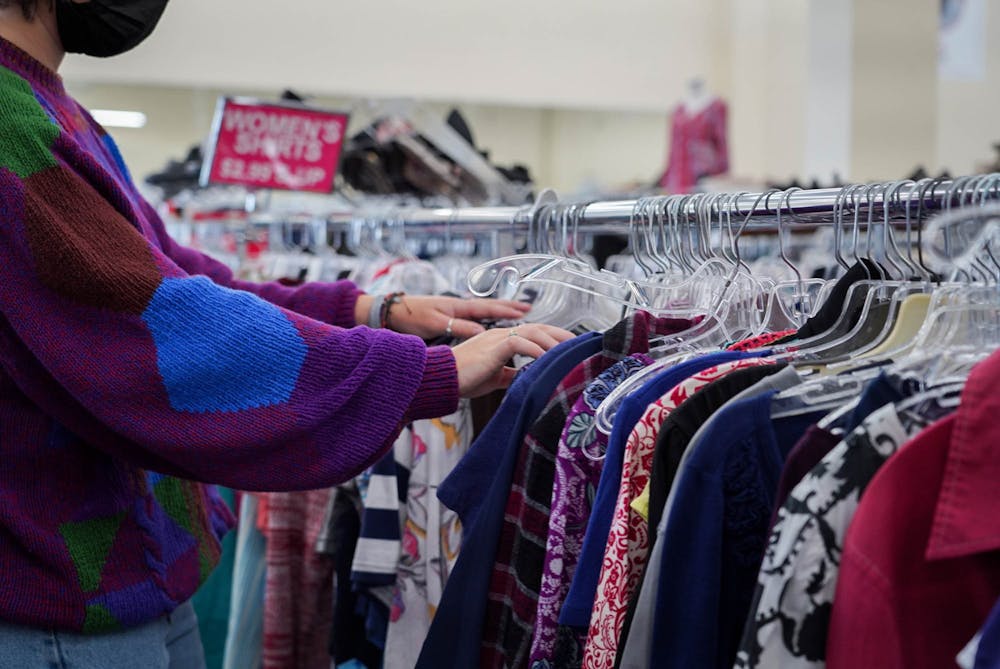Last week, as Paris Fashion Week came to a close, an unexpected occurrence took place at the Louis Vuitton Spring 2022 show. A protestor crashed the runway, holding a banner that said “overconsumption = extinction” — calling out the fashion industry for its role in the climate crisis.
The unwanted guest represented a number of activist groups in France concerned with climate change, and it was not the first time there was a protest at Fashion Week. Nearly a year ago, a protester at the Dior Spring 2021 show appeared with a sign that read “we are all fashion victims.”
While fast fashion is often villainized for its role in waste and carbon emission, they share the blame with higher-end brands that so often are left out of the conversation around sustainability and fashion.
The fashion industry is responsible for the production of nearly 20 percent of global waste water and 10 percent of global carbon emissions. Further, products are created in sites where workers are paid low wages, work long shifts and have dangerous working conditions. Workers are breathing in the toxic substances that then get pushed into the air.
The 2013 collapse of the Rana Plaza is just one example illuminating the toll on garment workers — 1,134 died.
Fast fashion, named for its quick operating model, exacerbates the problem through its accelerated pacing in production. Brands like Shein, Zara and H&M replenish the clothes on their site at a rate that allows consumers to buy quicker at lower prices, making spending more appealing for consumers. As more clothes are made and trends have a higher turnover rate, an increasing amount gets wasted in landfills.
While luxury fashion houses and its high-end brands follow a seasonal collection model that moves slower than fast fashion, they set the tone for the rest of the industry. They dictate trends that are adopted by other brands that can sell them at a higher volume for cheaper.
Fast fashion brands can take a look straight off the runway and produce it for cheaper and faster. Consumers who are unable to wait for collections to be ready-to-wear or, more likely, are unable to afford the high prices, turn to fast fashion brands because they can still enjoy the trends seen at fashion weeks.
If luxury houses are the current dictators of style and what’s “in,” they can also set the tone for what “slow fashion” looks like.




